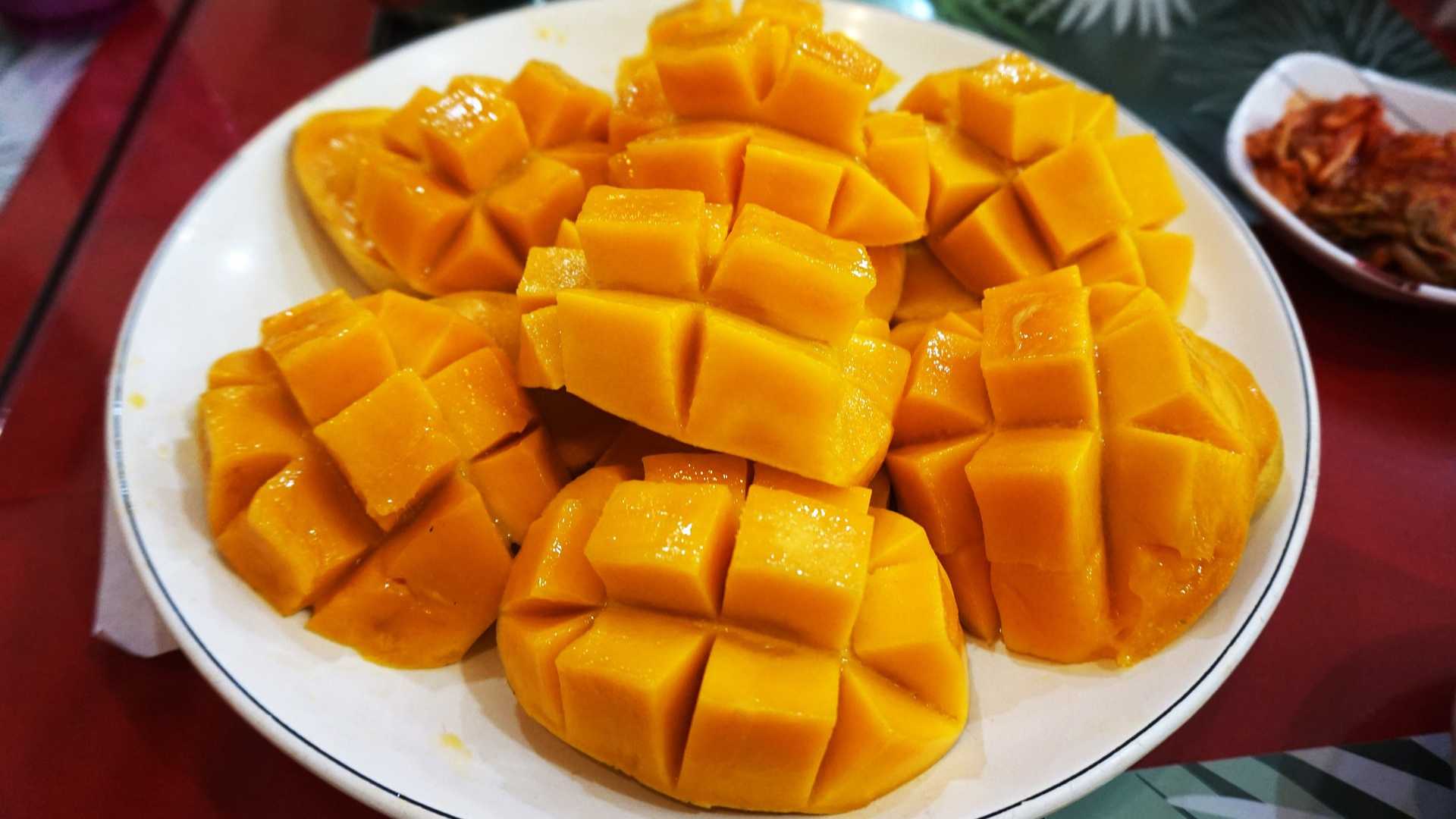
A Taste of Paradise: Exploring the Tropical Fruits in the Philippines
Hello, Staycationers! I’m Louie Sison, your guide to everything wonderful about our beloved Philippines.
Today, we’re going on a different kind of journey.
We’re not checking into a cozy bed and breakfast or exploring a hidden beach.
Instead, we’re embarking on a culinary adventure to discover the rich variety of tropical fruits in the Philippines.
The Philippines, as you know, is a tropical paradise. Blessed with year-round sunshine and fertile soil, our country is a haven for a wide array of vibrant and delicious fruits. These fruits are not just food; they’re a part of our culture, our lifestyle, and our identity as Filipinos. So, let’s dive in and explore the wonderful world of Philippine tropical fruits!
The Sweet and Succulent Mango
When you think of tropical fruits in the Philippines, the first thing that comes to mind is probably the mango. And why not? Our mangoes are world-renowned for their sweetness and succulence. They’re the kind of fruit that makes you close your eyes in delight with every bite.
There are several varieties of mangoes in the Philippines, but the most famous is the ‘Carabao’ mango, also known as the Philippine mango. It’s known for its bright yellow skin, sweet aroma, and incredibly juicy flesh.
Mangoes play a significant role in our cuisine and culture. They’re enjoyed fresh, used in salads, made into desserts, and even pickled for that delightful balance of sweet and sour known as ‘mangga at bagoong’.
But it’s not just about the taste. Mangoes are packed with vitamins and minerals, making them a delicious and healthy snack. They’re rich in Vitamin C, which boosts our immune system, and Vitamin A, which promotes good eyesight.
And let’s not forget about our mango-based dishes and delicacies. From the refreshing ‘mango float’ to the sweet ‘mango sago’, our love for mangoes is evident in our local cuisine.
The Versatile Banana
Next on our list is the humble banana. Now, you might be thinking, “Bananas? What’s so special about bananas?” Well, Staycationers, in the Philippines, bananas are more than just a fruit; they’re a staple.
We have several types of bananas, each with its own unique taste and texture. There’s the ‘Lakatan’, with its sweet and creamy flesh, the ‘Latundan’, which is slightly tangy, and the ‘Saba’, which is starchy and often used in cooking.
Bananas are a part of our daily diet. They’re the perfect on-the-go snack, a common ingredient in our desserts, and even serve as a meal when made into ‘banana cue’ or ‘turon’.
Like mangoes, bananas are also packed with health benefits. They’re a great source of energy, help in digestion, and are rich in potassium, which is good for the heart.
Our love for bananas also extends to our cuisine. Who can resist the sweet and sticky ‘banana cue’, the comforting ‘ginataang saba’, or the crispy ‘banana chips’? These are just some of the banana-based dishes that we Filipinos love.
The Refreshing Pineapple
Moving on, let’s talk about another tropical delight – the pineapple. Known as ‘pinya’ in the Philippines, this spiky fruit is a favorite for its refreshing and tangy taste.
There are several varieties of pineapples in the Philippines, but the most popular is the ‘Formosa’ pineapple, known for its sweet taste and high vitamin content. It’s a common sight in our local markets, with its bright green leaves and golden skin promising a burst of tropical flavor.
Pineapples hold a special place in Filipino cuisine. They’re used in savory dishes like ‘hamonado’ and ‘pininyahang manok’, adding a sweet and tangy flavor that balances out the richness of the meat. They’re also used in desserts and drinks, giving a tropical twist to our sweet treats.
But the goodness of pineapples doesn’t stop at their taste. They’re also packed with health benefits. They’re rich in Vitamin C and manganese, which are good for immunity and bone health. They also contain bromelain, an enzyme that aids in digestion.
And let’s not forget about our pineapple-based dishes and products. From the sweet ‘pineapple jam’ to the refreshing ‘pineapple juice’, these products showcase the versatility and deliciousness of our Philippine pineapples.
The Nutritious Coconut
Next up is the coconut, or as we locals call it, ‘buko’. This isn’t just a fruit, Staycationers, it’s the ‘Tree of Life’. Every part of the coconut tree has a use, from the leaves down to the roots. But today, we’re focusing on the fruit itself.
Coconuts are abundant in the Philippines. You’ll see coconut trees swaying in the breeze in almost every province you visit. The fruit is known for its refreshing water and tender meat, both of which are enjoyed by Filipinos and tourists alike.
Coconuts play a huge role in our diet and industry. The water is a refreshing drink, the meat is used in various dishes, and the milk is used in our beloved ‘ginataan’ recipes. Even the oil is used for cooking and natural remedies.
Health-wise, coconuts are a powerhouse. They’re packed with electrolytes, making them a natural energy drink. They’re also rich in medium-chain triglycerides, a type of fat that’s good for the heart.
Our coconut-based dishes and products are a testament to our love for this fruit. From the creamy ‘buko pandan’ to the hearty ‘laing’, coconuts truly add a unique flavor to our cuisine.
The Exotic Durian
Now, let’s venture into the more exotic side of our tropical fruits – the durian. Known as the ‘King of Fruits’, durian is famous (or infamous) for its strong smell. But don’t let that deter you, Staycationers. Once you get past the smell, you’ll be rewarded with a rich and creamy fruit that’s unlike any other.
Durian is not as widespread as our previous fruits, but it’s a common sight in Mindanao, particularly in Davao where it’s considered a star fruit. There are several varieties of durian in the Philippines, each with its own unique taste and texture.
Durian is more than just a fruit in the Philippines. It’s a cultural experience. It’s common to see locals and tourists alike challenging themselves to try this exotic fruit. And once you’ve tasted it, you’ll understand why it’s called the ‘King of Fruits’.
Health-wise, durian is a powerhouse. It’s rich in nutrients like Vitamin C, potassium, and dietary fiber. It’s also a good source of healthy fats.
And of course, we have our durian-based dishes and products. From the sweet ‘durian candy’ to the creamy ‘durian ice cream’, these treats are a must-try for any adventurous foodie.
The Hearty Jackfruit
Next on our list is the jackfruit, or ‘langka’. This is one of the largest fruits you’ll find in the Philippines, and it’s also one of the most versatile.
Jackfruit is unique in that it can be eaten in both its unripe and ripe stages. Unripe jackfruit has a meaty texture and is often used in savory dishes like ‘ginataang langka’. Ripe jackfruit, on the other hand, is sweet and fragrant and is often eaten as is or used in desserts.
Jackfruit is not just tasty, it’s also nutritious. It’s a good source of Vitamin C, dietary fiber, and antioxidants. It’s also high in potassium, which is good for heart health.
Our jackfruit-based dishes showcase the versatility of this fruit. From the savory ‘ginataang langka’ to the sweet ‘langka preserve’, there’s a jackfruit dish for every palate.
The Unique Rambutan
Moving on, let’s talk about the rambutan. With its bright red, spiky exterior, the rambutan is a fruit that’s hard to miss. But don’t worry, Staycationers, those spikes are soft and harmless. Inside, you’ll find a sweet and juicy fruit that’s a delight to eat.
Rambutan is a common sight in local markets during its season. It’s often eaten fresh, with the sweet and slightly acidic taste making it a refreshing snack. It’s also used in salads and desserts, adding a tropical twist to the dishes.
Like our other fruits, rambutan is packed with nutrients. It’s a good source of Vitamin C, calcium, and iron. It’s also rich in water, making it a hydrating snack.
Our rambutan-based dishes and products showcase the deliciousness of this fruit. From the refreshing ‘rambutan salad’ to the sweet ‘rambutan jam’, these treats are a testament to the versatility of rambutan.
Other Noteworthy Tropical Fruits
Of course, our tropical fruit adventure won’t be complete without mentioning other noteworthy fruits. We have the papaya, a fruit that’s often used in salads and skincare products. There’s also the guava, a fruit that’s rich in Vitamin C and often used in juices and jellies.
We also have the star apple, a fruit that’s as beautiful as it is delicious. And let’s not forget the dragon fruit, a fruit that’s as exotic as its name suggests.
Each of these fruits has its own unique taste, uses, and health benefits. They’re a testament to the rich biodiversity of our country and the creativity of our cuisine.
Conclusion
And there you have it, Staycationers – a taste of the tropical fruits in the Philippines. From the sweet mangoes to the exotic durian, these fruits are a testament to the richness and diversity of our country. They’re more than just food; they’re a part of our culture, our identity, and our way of life.
So the next time you’re on a staycation in the Philippines, why not try these fruits? Experience the taste of the Philippines, one fruit at a time. After all, as we always say here in staycations.ph, the best way to experience a place is to taste it. And what better way to taste the Philippines than through its tropical fruits?
Thank you for joining me on this culinary adventure. Until our next staycation, keep exploring, keep tasting, and keep enjoying the beauty of the Philippines.
Related posts:
- Key Differences Between a Cabin and Villa
- Philippine Tourist Spots
- One-Armed Wanderers: Staycation Features in Pampanga
Photo credit to pixabay.com




